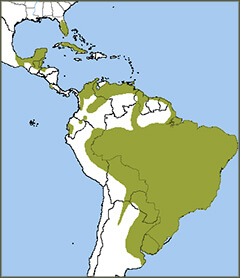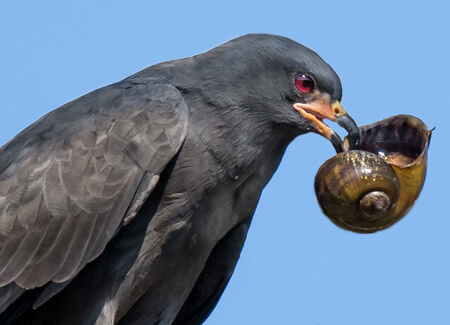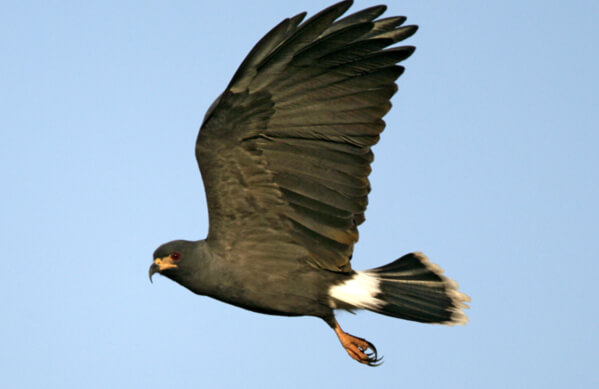 The Snail Kite has one of the most specialized tools among raptors: a long, deeply curved beak designed to pull snails—the birds' main food—out of their shells. This specialized diet restricts the Snail Kite to wetlands, so if that habitat is destroyed, the bird declines.
The Snail Kite has one of the most specialized tools among raptors: a long, deeply curved beak designed to pull snails—the birds' main food—out of their shells. This specialized diet restricts the Snail Kite to wetlands, so if that habitat is destroyed, the bird declines.
When hunting, Snail Kites fly low over marshlands, plunging down to snatch snails from just under the water or from vegetation. They then return to a favorite perch to feed. Although common in Latin America, the species is a federal and state endangered species in the United States.
Sign up for ABC's eNews to learn how you can help protect birds
Snail Kites are gregarious and may congregate in flocks at roost sites (as this recording from Brazil demonstrates) or while foraging for food. The birds also nest in colonies in low trees and bushes, usually over water. This species is markedly dimorphic: males are a dark blue-gray with striking red legs and females are streaked brown and white, with a white eyebrow line.

Snail Kite by Andrew W. Allport, Shutterstock
The U.S. population of Snail Kites dropped precipitously from 3,000 in the late 1990s to approximately 700 today. Water management in the Everglades and in the central and south Florida lakes is the most important human-controlled factor affecting the survival and recovery of the species in the U.S.
In addition, the small Florida population is threatened by pesticides and nutrient run-off. Invasive plants such as melaleuca make it difficult for the kites to forage.
Donate to support ABC's conservation mission!



















































